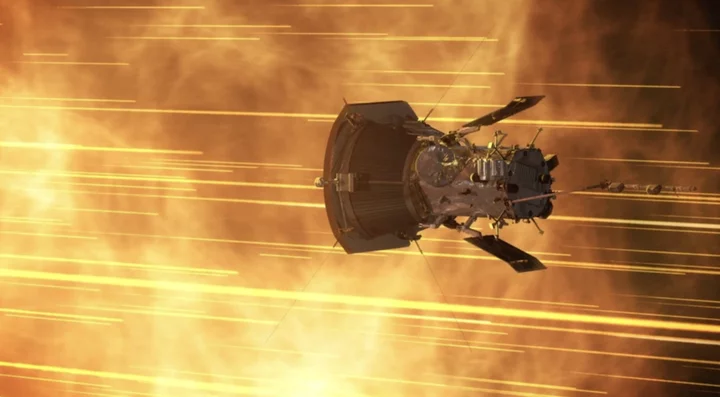A well-fortified NASA spacecraft flew through, and survived, an immense explosion from the sun.
Scientists recently released rare footage of this solar event, called a coronal mass ejection, or CME, which is the eruption of a mass of super hot gas (plasma). "It's like scooping up a piece of the sun and ejecting it into space," Mark Miesch, a scientist with the National Oceanic and Atmospheric Administration's Space Weather Prediction Center, told Mashable earlier this year.
This CME occurred in September 2022, and was "one of the most powerful coronal mass ejections (CMEs) ever recorded," NASA explained. Fortunately, the space agency's Parker Solar Probe, fitted with a robust heat shield, is designed to withstand such intense bursts of radiation. The pioneering probe is closely investigating the behavior of the sun.
SEE ALSO: Solar flares are shooting into space. How you'll know if one's trouble.Here's what you're seeing in the footage posted by the Johns Hopkins University Applied Physics Laboratory, a scientific collaborator on the solar probe:
The actual sun isn't visible in the shot, but our star's location is shown on the left of the screen.
At 14 seconds in, the CME becomes visible, shooting out from left to right. Then, BAM.
The probe then passes through the eruption and exits by the video's end.
This was no small feat. "In all, Parker spent roughly two days observing the CME, becoming the first spacecraft ever to fly through a powerful solar explosion near the sun," the Johns Hopkins lab explained.
Scientists are using observations from the Parker Solar Probe along with other spacecraft and telescopes to better grasp the behavior of potentially destructive CMEs and other types of space weather, like solar flares (explosions of energy from the sun's surface). CMEs, for example, "can endanger satellites, disrupt communications and navigation technologies, and even knock out power grids on Earth," NASA explains. Infamously, a potent CME in 1989 knocked out power to millions in Québec, Canada. The CME hit Earth's magnetic field on March 12 of that year, and then, wrote NASA astronomer Sten Odenwald, "Just after 2:44 a.m. on March 13, the currents found a weakness in the electrical power grid of Québec. In less than two minutes, the entire Québec power grid lost power. During the 12-hour blackout that followed, millions of people suddenly found themselves in dark office buildings and underground pedestrian tunnels, and in stalled elevators."
A CME ejected from the sun's surface on Feb. 27, 2000. Credit: SOHO ESA / NASAWant more science and tech news delivered straight to your inbox? Sign up for Mashable's Light Speed newsletter today.
In the coming years, observations from the Parker Solar Probe may help researchers better forecast where a potent ejection from the sun may hit Earth, allowing a country or region to better prepare (for example, by temporarily shutting down the electric grid).
For now, the mission continues: In 2024, the shielded spacecraft will hit a whopping 430,000 mph as it comes within 3.9 million miles of the sun.









